(4) Here's the logo, all sawn out:
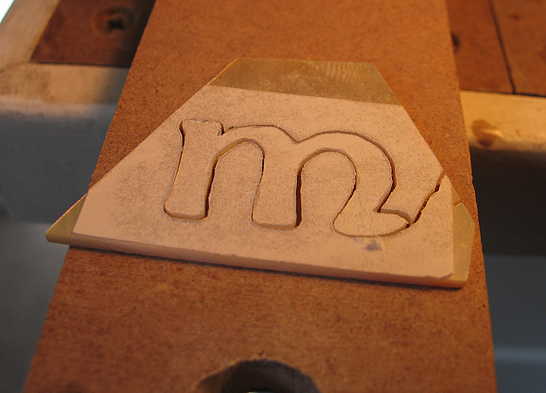
(5) I then soaked the logo in hot water for a while, to remove the superglued paper from the mother of pearl. (There's still a little bit of glue residue on the blank here, so it doesn't have quite the sheen it will have later, after I've inlaid it into the ebony veneer and sanded it down flush.)
(6) What I will do next is to use a needle file to smooth the edges of the inlay.
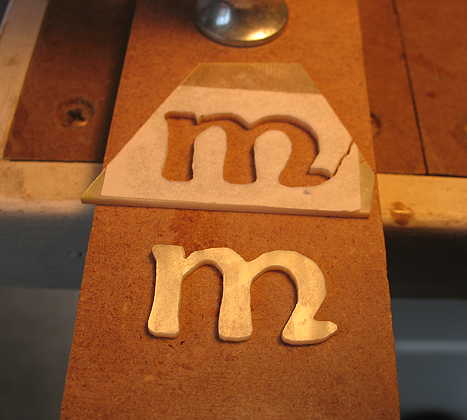
|
|
(7) Next, I stuck the inlay onto the peghead with some Titebond and carefully scribed around it with an Exacto knife. I removed the inlay, sprinkled some yellow chalk dust onto the scribing, and rubbed it into the scribed outline. This way, I can more easily see the outline as I rout out the cavity.
I used a 1/16" bit in the Dremel and routed out the cavity. The first routing is usually too small for the inlay to fit, so you have to then do some adjusting here and there, until the inlay fits into the cavity.
There are inevitably some gaps, but no problem --- those will be filled with epoxy mixed with ebony dust.
Here's the routed inlay cavity:
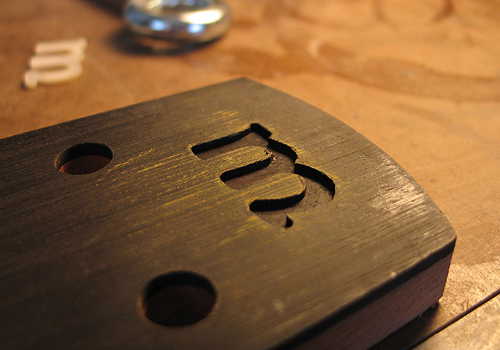
And here's how the inlay fits into the cavity:
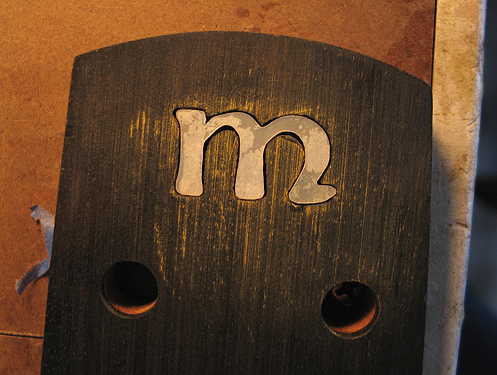
|
|
(9) Finally, I mix some ebony dust with 5-minute epoxy, spread it in the cavity, and lay the inlay into the cavity:
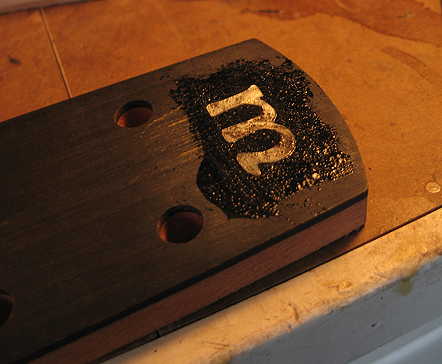
Later, after the epoxy cures, I will sand it down flush, and you won't be able to tell (unless you look really closely) that there are gaps.
Saturday, March 29th, 2014:
Okay....the first thing I did this morning was to sand down the epoxied-in inlay:
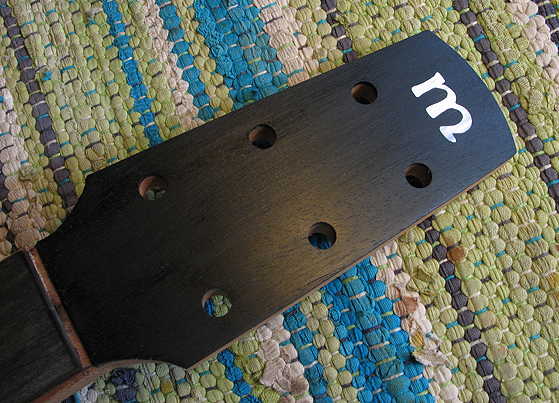
|
|
|